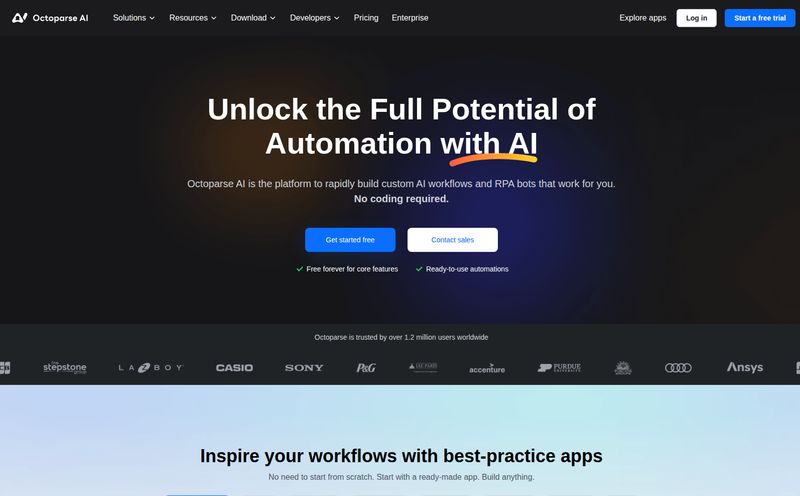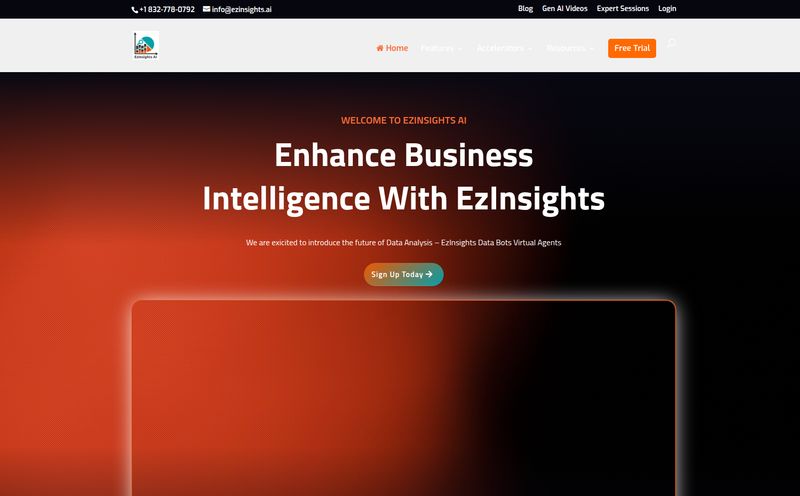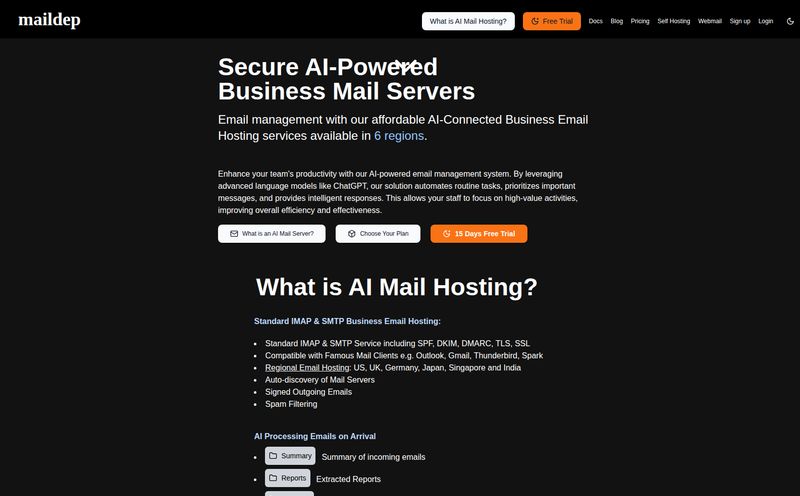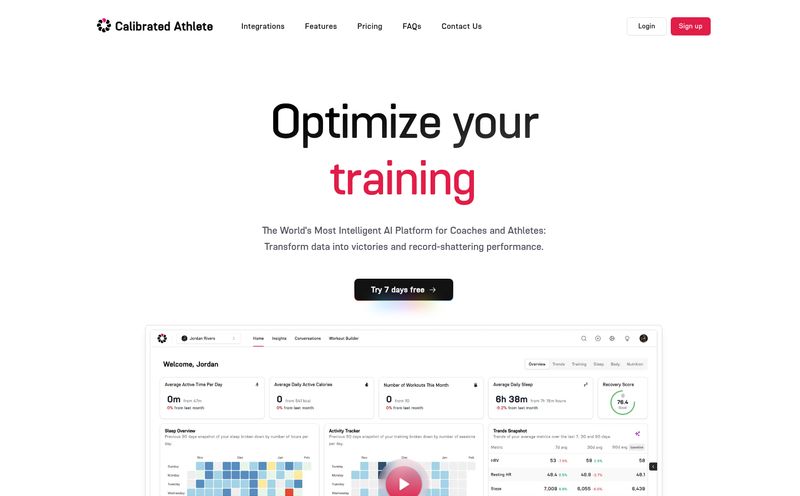For years, we’ve been sold the dream of “data-driven decisions.” We’ve poured money into sophisticated data warehouses, hired brilliant engineers, and bought licenses for every BI tool under the sun. Yet, for most people in a company, getting a simple question answered by data feels like sending a message in a bottle. You write your question, toss it over the wall to the data team, and hope something useful comes back… eventually. It’s a slow, frustrating dance.
I’ve lived this cycle for years, both as the person asking and the person being asked. It’s a systemic bottleneck. The business folks speak business, the tech folks speak SQL, and there’s a massive chasm in between.
Every so often, a tool comes along that claims to have built a bridge over that chasm. The latest one to land on my radar is LEGOAI. The name itself is clever, right? It evokes the idea of building something complex from simple, standardized pieces. Their big promise is to use Generative AI to create a “seamless fusion of business and technology.”
Big words. But can it deliver? I decided to take a look.
The Old Problem with Business Intelligence
Before we get into what LEGOAI does, let's just vent for a second about the status quo. The traditional BI workflow is broken. A marketing manager wants to know, “Which campaigns last quarter had the best ROI for customers under 30 in the UK?” Sounds simple. But to the database, it's a string of gibberish. That request becomes a ticket. The ticket waits in a queue. A data analyst picks it up, translates it into a complex SQL query, runs it, exports the data, builds a chart, and sends it back. A week later, the marketing manager gets their answer and immediately has a follow-up question. And the cycle begins again.
This isn't an efficient way to run a business. We need to get the answers directly into the hands of the people who need them. This idea, often called 'data democratization', has been the holy grail for a decade. LEGOAI is taking a very modern, GenAI-powered swing at it.
So, What Exactly is LEGOAI?
At its core, LEGOAI is a GenAI-powered analytics platform that translates your natural business questions into executable machine language. In plainer English? You talk to it like a person, and it queries your data like a machine.
It’s not just another dashboarding tool where you drag and drop pre-defined metrics. It's an intelligence layer that sits over your data, designed to understand context. The whole idea is to move from seeing data to conversing with it. Instead of hunting through filters and pre-built reports, a user can simply ask their question and get an explainable, accurate insight back. At least, that's the goal.
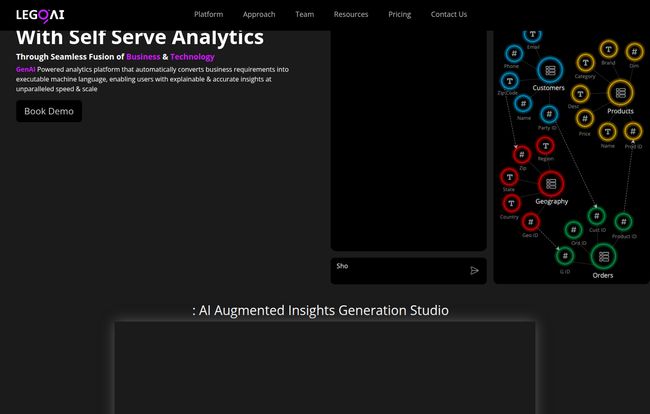
Visit LEGOAI
How LEGOAI Works Its Magic: A Peek Under the Hood
Okay, so “it uses GenAI” is a nice marketing line, but as an SEO and data guy, I want to know what’s really going on. The platform seems to be built on a few key pillars.
The Secret Sauce is Data Ontology
This is the part that really caught my eye. LEGOAI isn’t just pointing a generic ChatGPT-like model at your database and hoping for the best. That would be chaos. Instead, its effectiveness hinges on building a data ontology. Fancy term, simple concept. An ontology is basically a detailed map of your business's data and how it all connects. It's where you define what a 'customer', 'product', 'sale', and 'region' actually mean in your specific business context.
They have a tool called OntoCraft for this. Think of it as teaching the AI your company’s internal language and logic. You’re not just showing it a table of numbers labeled 'sales'; you’re teaching it that a 'sale' involves a 'customer', a 'product ID', a 'transaction date', and is linked to a 'geography'. This upfront work is what makes the whole thing possible. It’s the instruction manual for your LEGO set.
The Payoff: True Self-Serve Analytics
Once you’ve done teh hard work of building that ontology, the magic happens. Your team members—from marketing, sales, operations, you name it—can start asking questions in plain English. The AI uses the ontology to understand the request, generate the correct query behind the scenes, and present the findings. This is what they mean by self-serve. It removes the human data analyst as a permanent middleman, freeing them up for more complex, strategic work.
Explainable and Trustworthy Insights
One of my biggest gripes with AI is the 'black box' problem. If an AI gives me a number, I want to know how it got that number. LEGOAI seems to understand this. They claim their insights are explainable, meaning you can trace the relationships between the business metrics and the underlying data. This is absolutely critical for building trust. Without it, you’ve just got a very confident-sounding magic 8-ball.
The Promises vs. The Reality
On their site, LEGOAI makes some pretty bold claims: 70% productivity gains, 90% acceleration in use case implementation, and a 5x increase in adoption. I’ve seen my share of impressive-looking stats on landing pages. Can they hit these numbers? I think it depends.
The potential for increased productivity is clearly there. If you cut out the back-and-forth ticket cycle, you are absolutely saving man-hours. The same goes for empowering business users; giving them direct access is a huge win for adoption. However, it's not a silver bullet. The quality of the insights is entirely dependent on two things: the quality of your input data (the classic “garbage in, garbage out” problem) and the thoroughness of your data ontology. That initial setup will require a significant investment of time and expertise. It's not a plug-and-play solution, and I think it's important for potential users to understand that.
Who is LEGOAI Actually For?
Looking at their model, I see a clear path for a few different types of users.
- Individuals and Data Hobbyists: The free tier is a fantastic playground. If you're a student or a professional looking to get your hands dirty with GenAI analytics on a small scale, this is a no-brainer. It's a great way to learn the concepts.
- Startups and SMBs: This feels like the sweet spot. A growing company that is generating a lot of data but doesn't have the budget for a massive data engineering department could get immense value here. The subscription model allows them to punch well above their weight in analytics capabilities.
- Enterprises: For large organizations, the value is in scale and standardization. They can create a single, unified semantic layer over their complex and often siloed data systems. The custom plan, with its dedicated support and fine-tuned models, is built for this kind of challenge.
A Look at LEGOAI's Pricing Tiers
The pricing structure is pretty straightforward and logical, which is a refreshing change. You can find the full details on their pricing page, but here’s my quick summary:
Free Plan (for Individuals): This is your entry point. You get to play with up to 5 datasets, 100MB of data, and 100 queries. It uses generalized LLMs (like OpenAI's) and is perfect for getting a feel for the platform.
Subscription Plan (for Startups & SMBs): This is the first real business-tier. It bumps you up to 30 datasets, 10GB of storage, and 1,000 queries. Crucially, it gives you access to domain-specific fine-tuned LLMs, which should provide much more accurate and context-aware results. You also get priority support and more deployment options (cloud or on-premise).
Custom Plan (for Enterprises): This is the “call us” plan. Unlimited everything—datasets, size, queries. You get use-case specific fine-tuned LLMs, 24/7 support, and the full suite of deployment options. This is for organizations that want to go all-in on this approach.
My Final Verdict: Worth Building With?
So, what’s my takeaway? I’m genuinely optimistic about what LEGOAI is trying to do. This is the direction the industry needs to go. For too long, business intelligence has been anything but intelligent; it's been manual, slow, and clunky.
LEGOAI is not a magic wand. The success of its implementation will rest heavily on the quality of the initial ontology setup. It's an investment. But it’s an investment in building a sustainable, scalable analytics culture rather than just another dashboard. It's about teaching the machine to speak your language, so you don’t have to waste time trying to learn its.
If you're tired of the endless data request cycle, I think LEGOAI is, at the very least, worth a serious demo. It might just be the translator you've been looking for.
Frequently Asked Questions
- Is LEGOAI a replacement for tools like Tableau or Power BI?
- Not necessarily. I see it more as a powerful complement or a next-generation alternative to the querying and insight generation part of the process. You might still use a tool like Tableau for complex, beautiful visualizations, but LEGOAI could be the engine that feeds it the right data by answering the initial business questions.
- How difficult is it to set up the data ontology with OntoCraft?
- I'd wager it's the most challenging—and most important—part of the process. It will require collaboration between your business experts (who know what the terms mean) and your technical team (who know where the data lives). The platform aims to simplify this, but it’s not a 5-minute task. The effort you put in here will directly correlate to the value you get out.
- Can LEGOAI connect to my existing databases and data warehouses?
- Based on its design as an intelligence layer, that's precisely its purpose. A platform like this is meant to sit on top of your existing data stack (like Snowflake, BigQuery, Redshift, etc.) and provide the semantic interface to it, rather than requiring you to migrate all your data.
- What kind of LLMs does LEGOAI use?
- The platform mentions integration with OpenAI for its free tier, but for its paid plans, it emphasizes the use of domain-specific and use-case specific fine-tuned LLMs. This is a key differentiator, as fine-tuned models are much less likely to make errors or 'hallucinate' compared to generalized models when dealing with specialized business data.
- Is there a free trial for the paid business plans?
- The website provides a free tier for individual use, which acts as a sort of indefinite trial. For the Subscription and Enterprise plans, the call to action is "Talk to us," which typically means the sales process involves a personalized demo to assess your needs before discussing a trial or pilot project.
Conclusion
The gap between a business user's question and a data-backed answer has been a source of friction for decades. LEGOAI is one of the most interesting attempts I've seen to solve it head-on. By combining the power of Generative AI with the critical context of a business-specific data ontology, it offers a credible path toward true self-serve analytics. It's an ambitious platform, but in the fast-evolving world of data, ambition is exactly what we need.
Reference and Sources
- LEGOAI Official Website: https://legoai.com/
- LEGOAI Pricing Page: https://legoai.com/?utm_source=declom#pricing
